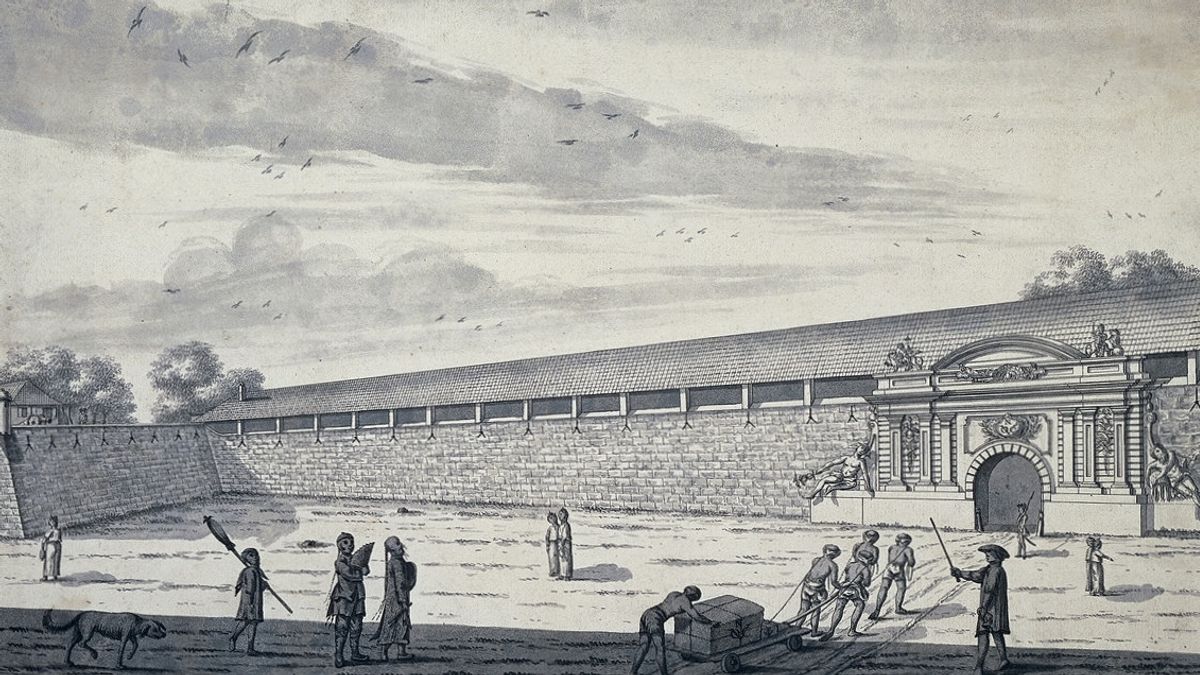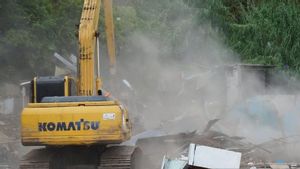JAKARTA - The charm of Batavia in the 18th century is so famous. Even many Dutch artists fell in love with the beauty and romance of Batavia. One of his most recognizable works is the painting of artist Johannes Rach.
Painting became the main medium to perpetuate Batavia's beauty at that time, apart from sketches and lithography, until photography technology appeared in 1850, at least. Regarding Rach, he is an artillery officer of the Vereenigde Oostindische Compagine (VOC).
Rach was born in Copenhagen, Denmark in 1720. Since childhood he has shown his talent for painting through his hobby of drawing. However, this talent was matured when Rach met the Danish Palace painter, Peter Wichmann (1706-1769). From Wichmann, Rach studied painting.
Long story short, Rach then moved to Holland in 1750. At that time Rach followed his desire to become a famous painter in Haarlem. However, Rach is not satisfied with his achievement. This dissatisfaction led Rach to become a shooting soldier under the banner of the Dutch trade association, the VOC in 1760. As a soldier, Rach was stationed for two years in Cape of Good Hope, South Africa, until then transferred to Batavia, another Dutch colony.
Alwi Shahab in the book Waktu Holland Mabuklah Batavia (2013) describes Rach's painting ability immediately sedated the company officials in Batavia. Lucky Rach. His dream of becoming a famous painter came true in Kanal City. Because of Rach's big name, rich European people have to fill out a waiting list to borrow Rach's shrewdness.
At that time Rach only made wet paintings because of his ability to paint without sketches. Furthermore, Rach slowly painted every corner of the city that was founded by Jan Pieterszoon Coen from 1762 to 1783. The objects were various, ranging from the resting house of the VOC governor general, city hall, church, hospital, to social life in Batavia.

“Rach also described daily life in Batavia, such as churches and Chinese temples. The Islamic scholars were chatting, the Arab swordsmen on the side of Ciliwung, and the Javanese peasants were bringing their crops. Altogether there are 202 Rach paintings kept by the National Library of Indonesia, in collaboration with the Rijkmuseum in the Netherlands, "said Alwi, who is one of the important shops in the writing of Jakarta history.
Not only that. Rach also helped paint the fort, Pasar Meester Cornelis (Jatinegara), Pasar Senen which still had thatched roofs, and carts, which at that time were the main transportation in Batavia. We wrote the details on Monday in Pasar Senen. Even Rach also had time to paint the excitement of the revelry of the inauguration of the governor general and the existence of Chinese people in Batavia.
“A painting by Johannes Rach shows that Chinese houses in the Senen area are made of wood with bamboo walls. The roof is usually covered with palm tree leaves. These houses are only one floor and built lengthwise, ”writes the book Past in the Present: Architecture in Indonesia (2007).
In the end, Rach's love for the City of Benteng forced him to stay in Batavia until he died. Rach died at his residence on Jalan Roe Malaka, Batavia. Rach's tomb can still be visited at the Jalan Tanah Abang I Inscription Museum, Central Jakarta.
A timeless painting
Even though he has passed away for a long time, Rach's works are timeless. Much nostalgia can be captured from Rach's paintings. In fact, Rach's work was used as a guide in the Oud Batavia (Kota Tua) restoration project. The project was carried out to restore the distinctiveness of the majestic atmosphere of the City of Batavia.
"Thanks to the works of Johanes Rach and his assistants who describe in detail all corners of Batavia in the 18th century, we can, for example, imagine what the original form of buildings in the Kota area (Oud Batavia) is now. Some time ago, for example. When constructing a tunnel in front of Beos Station (Kota Station), the masons found a fence under the ground, ”said Seno Joyo Suyono and Anton Septian in their writing in Tempo Magazine entitled Batavia Before Camera (2007).
When the DKI Jakarta government carried out the restoration of Fatahillah Park in the 1990s, again Rach's paintings played an important role. His 1770 painting is a reference. Through Rach's painting, the project workers were able to ascertain how the water fountain that used to be in the middle of the square looked like. As a result, in an excavation carried out, the authorities succeeded in uncovering the original base of the fountain which is in front of the Jakarta History Museum.
It was also through the discovered debris that the fountain was rebuilt. The remnants of the original foundations were found and used as the basis for building a fountain. However, not all have the same fate. A series of old buildings that were destroyed during the reign of Governor General Herman Willem Daendels (1807-1811), including the Batavia Castle, cannot be rebuilt.
Therefore, the current generation's access to the remnants of Batavia's glory in the 18th century is limited. Fortunately, in the midst of these limitations, a series of paintings by Johannes Rach can answer the curiosity of the old Batavia image. Even if his paintings are not widely available on the internet, then the best way to satisfy curiosity is to visit the National Library of Indonesia. This is because there are all documentation of paintings by Johannes Rach from 1720 to 1783.
The English, Chinese, Japanese, Arabic, and French versions are automatically generated by the AI. So there may still be inaccuracies in translating, please always see Indonesian as our main language. (system supported by DigitalSiber.id)










